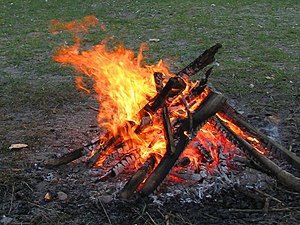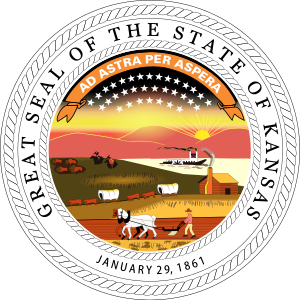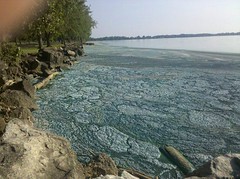 Image via Wikipedia Little River native brings nationwide grant-writing experience to organization
Image via Wikipedia Little River native brings nationwide grant-writing experience to organizationLAWRENCE — Kansas Wildscape Foundation, a nonprofit corporation dedicated to creating and enhancing outdoor opportunities in Kansas, recently named Lynn Gentine as director of development. Gentine will work to advance both development and outreach goals for the foundation. In addition, she will be responsible for operation of Wildscape’s O.K. Kids Program and WildLifer Challenge.
A native of Little River, Gentine has used her grant writing and project-management experience in the Topeka, Las Vegas, and Detroit-Metro areas. As a former employee of the U.S. Forest Service, Gentine worked within the cultural resource management division in Montana, providing project assessments and impact statements. She has a B.A. in anthropology from the University of Kansas.
“I am very excited to have Lynn working with Wildscape as we seek to not only strengthen and grow our existing youth programs but also develop other aspects of our organization,” said Charlie Black, Wildscape executive director. “Wildscape must grow to be effective, and with Lynn's experience, we are heading in the right direction."
The Kansas Wildscape Foundation was founded in 1991, in coordination with the Kansas Department of Wildlife and Parks, to identify projects involving all aspects of outdoor recreation and education in Kansas and to fund those projects, in whole or in part, with tax-deductible donations. The foundation was instrumental in funding the $5 million restoration of 2,300 acres of wetlands near Milford Reservoir and is currently raising money to build public-use cabins at state parks throughout Kansas.
Wildscape’s Outdoor Kansas for Kids Program (O.K. Kids) has assisted nearly 50 sites statewide and engages more than 12,000 children and families in outdoor recreational activities each year. The WildLifer Challenge, www.kansaswildlifer.com, was created in 2010 and currently has more than 500 youth enrolled in the fun and simple online program that leads participants to complete outdoor challenges. Visit www.kansaswildscape.org for more information.



































